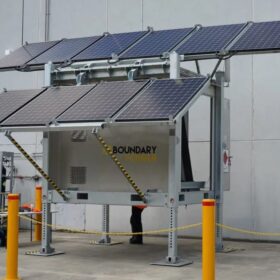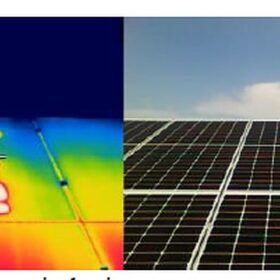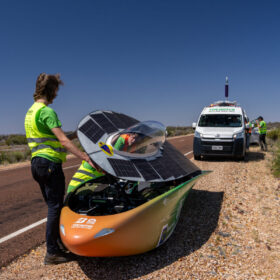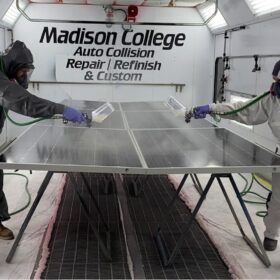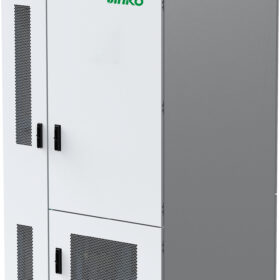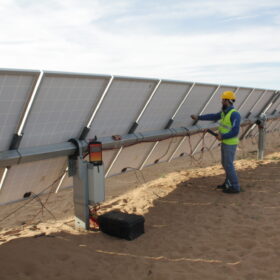Boundary reveals ‘Australian first’ hydrogen-powered stand-alone power system
Boundary Power is claiming an Australian first with the unveiling of a 100% relocatable and modular stand-alone power system that integrates solar with a hydrogen electrolyser and storage system, doing away with the traditional back-up diesel generator.
Combination of half-cut, bifacial solar cell designs may contribute to hotspot formation
Scientists in Spain tested PV modules under partial shading conditions, aiming to better understand the formation of performance-damaging hotspots. The study reveals a potential issue particularly affecting half-cell and bifacial modules, which may cause accelerated performance loss and is not covered by current testing/certification standards.
King honours Australian solar pioneers
Four solar pioneers, including the Australian scientists Martin Green and Andrew Blakers, have been awarded the world’s most prestigious engineering prize for their groundbreaking research into solar cell technology.
Perovskite-silicon tandem tech tested in solar race car
A team of Dutch university students under the banner Top Dutch Solar Racing has installed perovskite silicon tandem cells in its entry in the 16th edition of Bridgestone World Solar Challenge. The upcoming race is a six-day, 3,000km expedition across Australia, from Darwin to Adelaide.
Esy Sunhome unveils residential lithium iron phosphate battery
The Chinese manufacturer said its new LiFePo4 battery is IP66-rated and has a lifecycle of more than 6,000 cycles. It comes with a 10-year warranty.
Novel thin-film anti-soiling coating increases solar module yield by over 3%
A group of scientists in the United States saw ‘encouraging’ results after testing the commercialisation of novel coating materials in field tests, with the coating only increasing a panel’s total cost by 1.4%.
‘Haven’t seen anything like this’: fire crews called to thermal energy storage pilot plant
Thermal energy storage startup MGA Thermal had fire crews called to its demonstration plant in Tomargo, north of Sydney after the company’s pilot unit overheated. “We haven’t seen anything like this before,” Scott Dodson from Fire and Rescue NSW said.
JinkoSolar introduces all-in-one battery solution for C&I solar
JinkoSolar has launched an all-in-one battery solution for commercial and industrial (C&I) solar applications. It includes a new outdoor cabinet that integrates battery packs, a management system, a power conversion system, and firefighting equipment. The system offers 215 kWh of battery capacity and up to 100 KW of rated power output.
New method to take PV plant measurements in the field
Spanish researchers claim to have established new measurement methods to assess the performance degradation of PV modules without the need for removing and reinstalling the tested PV modules from their operating positions. The new approach is claimed to increase productivity in PV plant quality control activities.
New model for day-ahead solar forecasting in areas with limited data
South Korean researchers have developed a long-term solar irradiance prediction method based on a reinforcement learning algorithm. They claim that the new model is able to forecast solar radiation for more than a year using just two weeks of solar radiation learning.
